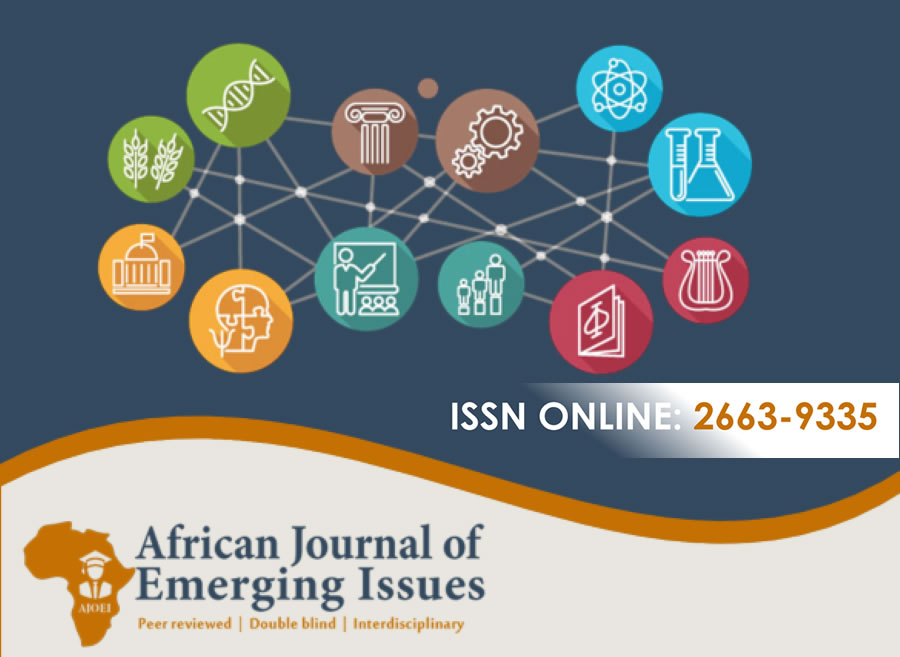INFLUENCE OF FINANCIAL PLANNING PRACTICES ON STUDENTS’ RETENTION IN PUBLIC SECONDARY SCHOOLS IN CHONYI SUB-COUNTY, KILIFI COUNTY, KENYA
Abstract
Purpose of the Study: Thus, the purpose of this was to study to examine the influence of financial planning practices on students’ retention in public secondary schools, Chonyi Sub- county, Kilifi County, Kenya.
Statement of the Problem: Students’ retention in secondary schools is key to the realization of educational objectives. However, in Chonyi Sub-county, the situation is quite different with students’ retention in public secondary schools being low.
Methodology: The study employed a concurrent triangulation research design with a target population of 98 respondents, using a census method. Stratified sampling created two strata, selecting 12 principals, 60 HoDs, 12 BoM Chairs, 12 bursars, and 2 sub-county auditors. Data collection involved questionnaires for HoDs and interviews for other respondents, with qualitative data analyzed thematically and quantitative data analyzed using descriptive and inferential statistics (Pearson’s correlation) via SPSS Version 25, presented in tables.
Findings: The study found low student retention rates in public secondary schools despite increased Form I enrollment under the 100% transition policy from 2018 to 2023. However, completion rates remain low due to inadequate financial planning by principals. This lack of engagement has contributed to rising student dropout rates.
Recommendations: Principals should adopt financial planning strategies which are aimed at ensuring that much resources are allocated for learner-centered activities to keep as many students as possible in school.
Keywords: Financial planning practices, students’ retention, public secondary schools
References
Adams, R. (1994). Finance management theory. Journal of Nonprofit Management, 12(4), 45– 60.
Asim, M., Bell, S., Boakye-Yiadom, M., Nudzor, H. P., & Mundy, K. (2024). Management practices and implementation challenges in district education directorates in Ghana. Educational Administration Quarterly,4(2), 33–56.
Bishop, G. (2014). Curriculum development: A textbook for students. Macmillan Education.
Creswell, J. W. (2014). A concise introduction to mixed methods research. SAGE Publications.
Johnson, R., Andrews, T., & Lee, C. (2021). Strategic financial management in schools: A double-edged sword in student retention strategies. International Journal of Educational Leadership, 14(5), 301–315.
Kaberia, E. L., Kindiki, J., & Ndiku, J. M. (2022). A critique of resource allocation models for secondary schools. International Journal of Education and Research, 2(8), 419–428.
Kenya Education Sector Report. (2021). Education sector performance in Kilifi County: Challenges and opportunities. Kenya Education Sector Reports.
Ministry of Education. (2023). Annual education report: Retention and completion rates in Kenyan schools. Ministry of Education Publications.
Molaudzi, A., Netshidzivhani, M. V., & Mamokhere, J. (2022). The nexus between the allocation of school resources and learners’ achievement in public schools: A case of Limpopo Province, South Africa. African Perspectives of Research in Teaching & Learning, 6(1), 171–186
Mulford, B., & Silins, H. (2021). Strategic resource allocation and its impact on academic retention: A case for principal leadership. Journal of Educational Administration, 59(3), 456–470.
Muralidharan, K., & Prakash, N. (2013). Cycling to school: Increasing secondary school enrollment for girls in India. Mahwah Printing Press. https://doi.org/10.3386/w19305
Ndege, S. A., Akala, B., & Achieng', L. (2019). Factors influencing voluntary teacher attrition in public secondary schools in Kilifi County, Kenya. Journal of Popular Education in Africa, 3(5), 43–58.
Ngigi, J., Maina, P., & Wanjiru, L. (2021). The impact of financial mismanagement on school retention: A case study of rural schools in Kenya. Journal of Education and Development, 10(3), 45–62.
Odden, A., & Picus, L. O. (2011). Improving teaching and learning when budgets are tight. Phi Delta Kappan, 93, 42–48. https://doi.org/10.1177/003172171109300107
Onyekan, O. A., Adelodun, S. S., & Oresajo, N. O. (2022). Allocation of financial resources to enhance educational productivity and students' outcomes in Nigeria. Department of National Institute for Educational Planning and Administration, Nigeria.
Peters, K., & Banjo, O. (2023). The role of financial transparency in enhancing school retention rates: Insights for school leadership. Educational Finance Review, 17(2), 234–249.
Smart, R. (2019). Comparing resource-allocation practices on student performance between charter public schools and traditional public schools. ResearchGate, 1(1).
Smith, J., & Taylor, L. (2020). Examining school budgets in low-income communities: Subsidies versus outcomes. Journal of Education Policy, 35(6), 781–798.
Tendai, M., & Mugambi, K. (2022). Underfunding and its effects on school retention in rural areas. Journal of Rural Education Policy, 15(1), 34–49.
Tinto, V. (2010). From theory to action: Exploring the institutional conditions for student retention. Higher Education: Handbook of Theory and Research, 51–89. https://doi.org/10.1007/978-90-481-8598-6_2
Willis, J., & Hill, M. (2011). Budgeting based on student needs. District Administration, 47(5), 79–84.
Woessmann, L. (2020). Families, schools, and secondary-school learning: Evidence for Mexico, Argentina, and Colombia in an international perspective. World Bank Policy Research Paper 3537.





